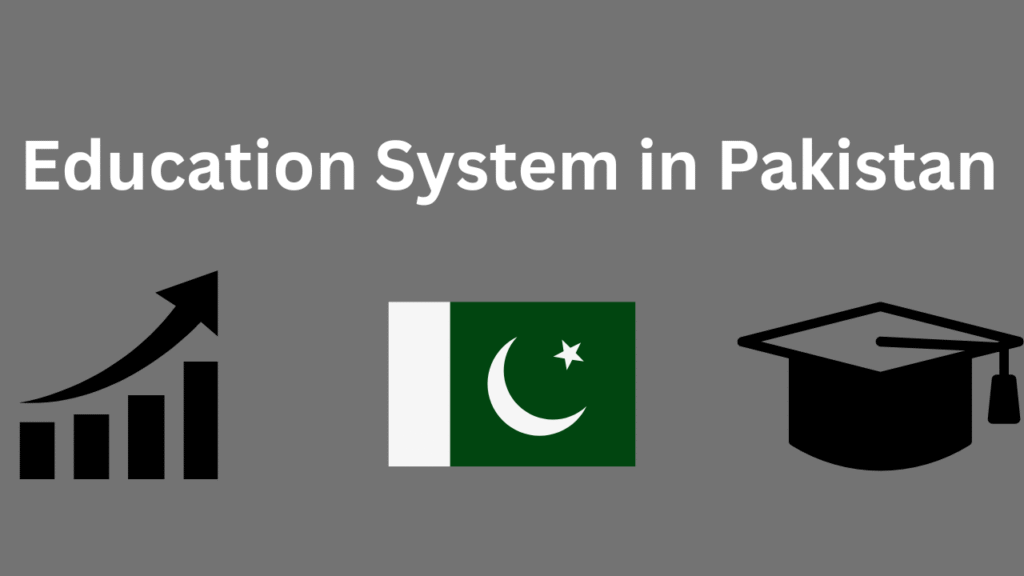
Introduction
The Education System in Pakistan plays a vital role in shaping the nation’s future. It covers primary, secondary, and higher education, serving millions of students across the country. The system has improved over the years, yet still faces challenges. Understanding the Education System in Pakistan helps highlight both its strengths and weaknesses.
Historical Background
After independence in 1947, the was influenced by colonial structures. Early governments emphasized literacy, but progress was slow due to limited resources. Over the decades, reforms were introduced to modernize schools and universities. Today, the Education System in Pakistan reflects both traditional and modern learning approaches.
Structure Primary to Higher Education
The Education System in Pakistan follows a structured model from primary to higher education. It begins with early childhood learning, followed by primary, middle, secondary, and intermediate levels. After that, students can pursue university education. Despite this organized framework, the struggles with quality and accessibility.
Role of Public and Private Schools in Pakistan
Public and private schools are central to the Public schools provide affordable education but often lack modern facilities. Private schools, on the other hand, offer advanced resources but are costly. This divide creates inequality, highlighting the challenges within the Education.
Higher Education in Pakistan: Universities and Colleges
Universities and colleges are the backbone of higher learning in the Education. Public universities cater to large populations at lower costs, while private universities provide specialized programs. Despite progress, the Education faces issues such as limited research opportunities and outdated curricula.
Challenges Faced
The Education struggles with many challenges, including low literacy rates, lack of funding, and teacher shortages. Rural areas face more difficulties due to fewer schools and weak infrastructure. Addressing these issues is critical for improving the overall quality of the Education.
Government Policies and Reforms in Education
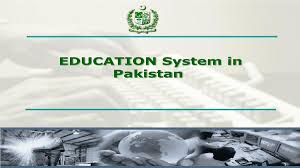
Over the years, governments have introduced reforms to strengthen the Education. Policies focus on increasing enrollment, improving teacher training, and enhancing curriculum quality. However, implementation often remains inconsistent. Strong reforms are necessary for building a sustainable Education that benefits all students.
Role of Technology
Technology is transforming the Education by making learning more accessible and interactive. Online classes, digital libraries, and e-learning platforms are growing in popularity. Although challenges like internet access remain, integrating technology into the Education can help bridge many educational gaps.
Future Opportunities and Growth
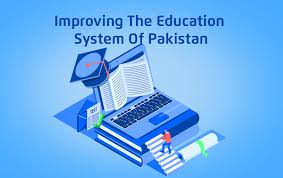
The future of the Education depends on investment in technology, teacher training, and infrastructure. With proper reforms, the system can meet international standards. There is great potential for growth, and if managed properly, the Education System in Pakistan can empower the youth to compete globally.
Conclusion:
The Education has progressed but still faces significant challenges. Quality, accessibility, and modern resources must be improved for real change. With strong policies and investment, the Education can ensure equal opportunities for every child. A stronger system will lead to a stronger nation.
FAQs
Q5: How can the Education System in Pakistan improve in the future?
Improvement requires investment in technology, better infrastructure, quality teachers, and equal opportunities for all students across the country.
Q1: What is the structure of the Education System in Pakistan?
The Education System in Pakistan is divided into primary, middle, secondary, intermediate, and higher education levels. It also includes technical and vocational training.
Q2: What are the major challenges in the Education System in Pakistan?
The main challenges are low literacy rates, lack of funding, poor infrastructure, outdated curriculum, and unequal access to quality education between urban and rural areas.
Q3: How does technology help the Education System in Pakistan?
Technology supports the Education System in Pakistan by enabling online classes, digital libraries, and e-learning platforms. It also helps students in remote areas access quality education.
Q4: What role do private schools play in the Education System in Pakistan?
Private schools provide modern facilities and advanced learning methods. However, they are expensive, creating inequality compared to public schools within the Education System in Pakistan.
Q5: What is the future of the Education System in Pakistan?
The future of the Education System in Pakistan depends on reforms, investment in technology, and improving teacher training. If implemented well, it can meet global standards.
Q1: What is the current literacy rate in Pakistan?
The literacy rate in Pakistan is around 62%, with a noticeable gap between urban and rural areas, showing challenges in the Education System in Pakistan.
Q2: How many types of education systems exist in Pakistan?
Pakistan has multiple systems including public schools, private schools, madrassas, and international schools, all part of the diverse Education System in Pakistan.
Q3: Why is the Education System in Pakistan facing problems?
The Education System in Pakistan struggles due to lack of funding, teacher shortages, poor infrastructure, and unequal access to resources across regions.
Q4: What reforms has the government introduced for education?
The government has launched policies to increase enrollment, improve teacher training, and update curriculum to modernize the Education System in Pakistan.

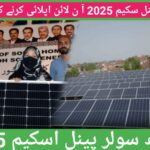

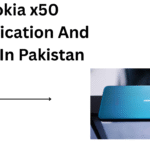


Leave a Reply